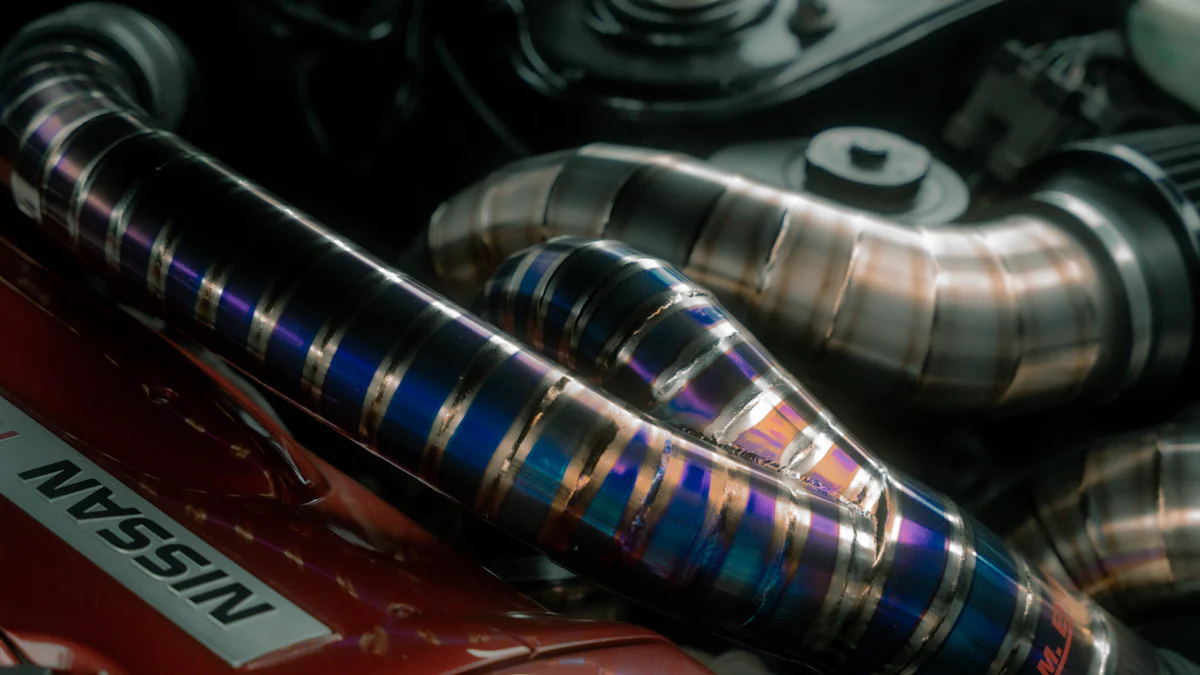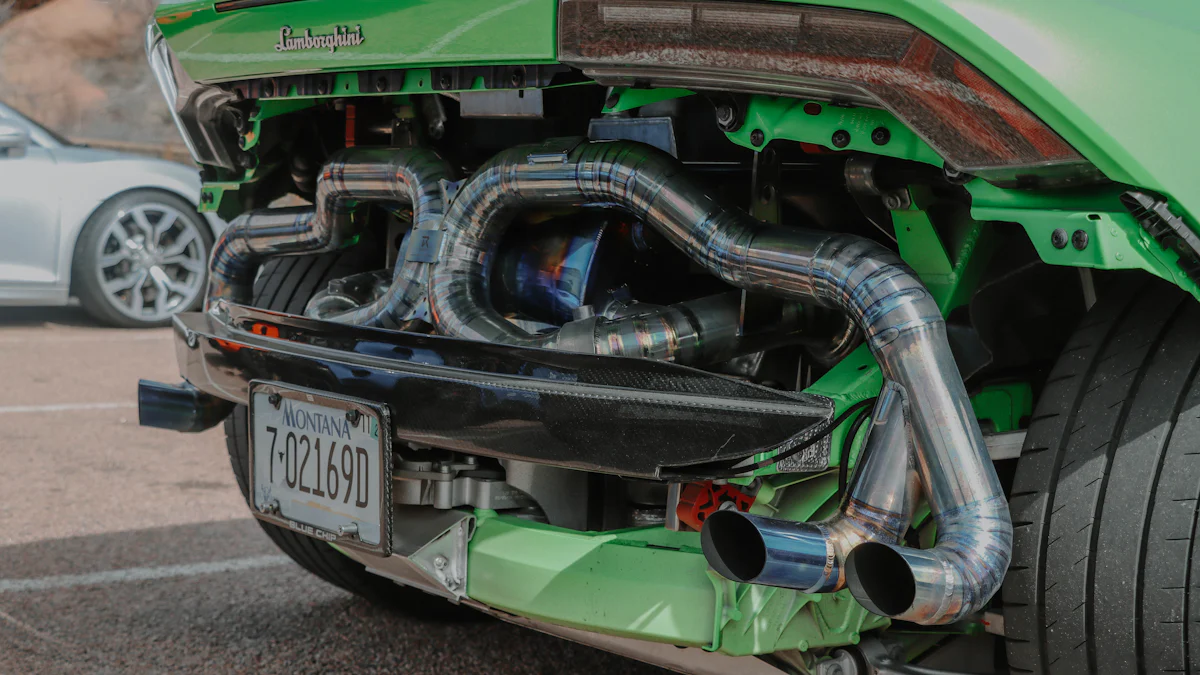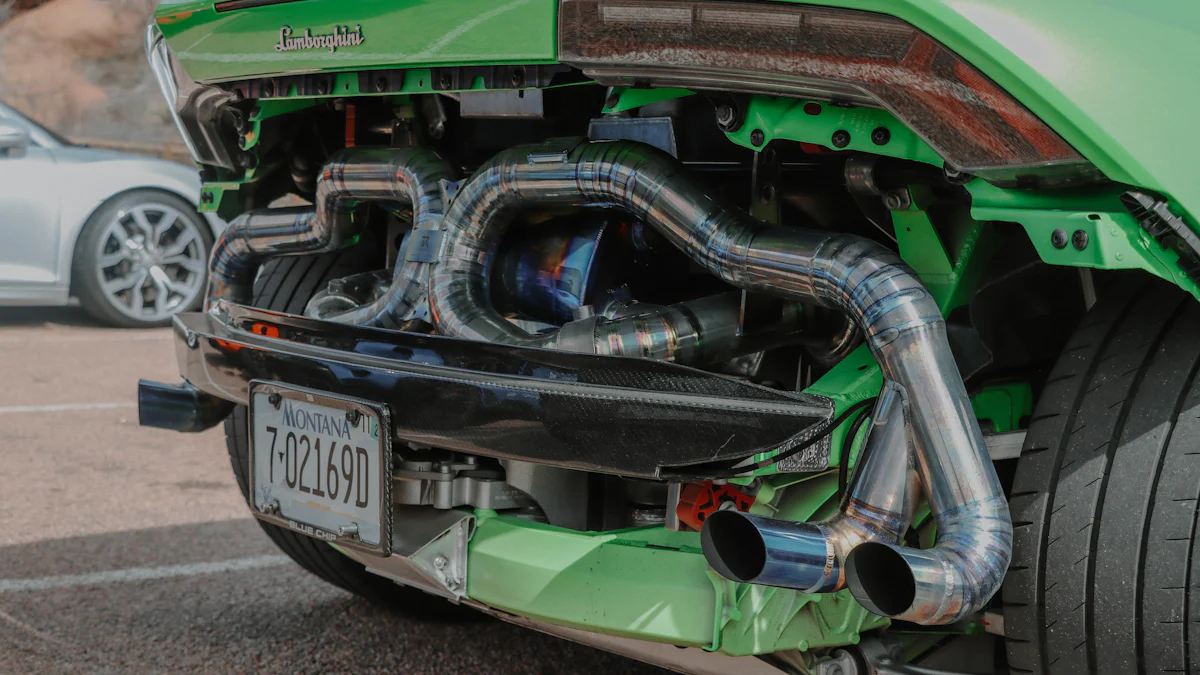
Rear Exhaust Manifold systems play a crucial role in enhancing vehicle performance by optimizing the flow of exhaust gases. Understanding the significance of exhaust systems is key for beginners delving into automotive upgrades. This guide aims to provide a comprehensive introduction, shedding light on the components and functions of these systems to empower enthusiasts in making informed decisions.
Understanding the Function of Exhaust Systems
What is an Exhaust System?
An Exhaust System in a vehicle serves a vital purpose. It expels gases produced during the combustion process, ensuring optimal engine performance. The system’s components work together seamlessly to enhance the vehicle’s overall functionality.
Basic Definition
The Exhaust System can be defined as a series of pipes and components that guide exhaust gases away from the engine. This process is crucial for maintaining engine health and efficiency.
Role in Vehicle Performance
The Exhaust System significantly impacts how well a vehicle operates. By expelling harmful gases efficiently, it contributes to improved fuel consumption, reduced emissions, and enhanced engine power.
Types of Exhaust Systems
When considering Exhaust Systems, various options cater to different performance needs and preferences. Understanding these types can help enthusiasts make informed decisions about their vehicles.
Manifold Back Exhaust Systems
Manifold Back Exhaust Systems are designed to optimize exhaust flow from the manifold towards the rear of the vehicle. These systems play a key role in enhancing engine performance and sound quality.
Cat-Back Exhaust Systems
Cat-Back Exhaust Systems focus on improving exhaust flow from the catalytic converter to the back of the vehicle. They offer benefits such as enhanced horsepower and torque, along with a more aggressive exhaust note.
Axle-Back Exhaust Systems
Axle-Back Exhaust Systems concentrate on upgrading exhaust components located near the rear axle of the vehicle. These systems provide a balance between performance enhancement and sound customization options.
Benefits of a Well-Functioning Exhaust System
Ensuring that your Exhaust System operates optimally can lead to several advantages for your vehicle’s overall performance and environmental impact.
Improved Engine Performance
A well-maintained Exhaust System contributes to better engine performance by optimizing exhaust flow, resulting in increased horsepower and torque output.
Enhanced Fuel Efficiency
By efficiently expelling exhaust gases, a high-quality Exhaust System can improve fuel consumption, allowing your vehicle to run more economically over time.
Reduced Emissions
A properly functioning Exhaust System plays a crucial role in reducing harmful emissions released into the environment. This not only benefits air quality but also ensures compliance with emission regulations.
Main Components of Manifold Back Exhaust Systems

Exhaust Manifold
The Exhaust Manifold serves as a critical component in the exhaust system, playing a pivotal role in optimizing engine performance. It acts as the initial point where exhaust gases are collected from each cylinder’s port in the engine block.
Function and Importance
- The primary function of the Exhaust Manifold is to gather exhaust gases emitted during combustion.
- Similar to the lungs’ role in breathing, the manifold inhales these gases and directs them towards the tailpipe for expulsion.
- An inline engine typically features one Exhaust Manifold, while V and flat engines incorporate two, each dedicated to a cylinder bank.
Common Materials Used
- Steel: Known for its durability and cost-effectiveness.
- Cast Iron: Offers robustness and heat resistance suitable for high-performance applications.
- Stainless Steel: Provides corrosion resistance and longevity, ideal for aftermarket upgrades.
Catalytic Converter
The Catalytic Converter is an essential element within the exhaust system, contributing significantly to emission control measures and environmental protection.
Role in Emission Control
- The primary function of the Catalytic Converter is to reduce harmful emissions produced during combustion.
- By converting toxic gases like carbon monoxide into less harmful substances, it plays a crucial role in minimizing environmental impact.
Types of Catalytic Converters
- Three-Way Catalytic Converter: Efficiently reduces three main pollutants—nitrogen oxides, carbon monoxide, and unburned hydrocarbons.
- Oxidation Catalytic Converter: Focuses on converting carbon monoxide and hydrocarbons into carbon dioxide and water vapor.
Resonator
Within the manifold back exhaust system, the Resonator serves a specific purpose that influences both sound quality and overall performance.
Purpose and Function
- The primary purpose of the Resonator is to reduce noise levels generated by exhaust gases passing through the system.
- By strategically dampening sound waves, it helps achieve a more refined exhaust note without compromising performance.
Impact on Sound and Performance
- Sound Quality: The inclusion of a resonator can help eliminate undesirable frequencies or tones from the exhaust note.
- Performance Enhancement: While primarily focused on sound attenuation, resonators can also contribute to optimizing airflow dynamics within the exhaust system.
Muffler
The muffler in an exhaust system is a critical component responsible for reducing the noise generated by the flow of exhaust gases. It plays a significant role in enhancing the driving experience by minimizing disruptive sounds and creating a more pleasant environment for passengers.
Noise Reduction
- The primary function of the muffler is to decrease the loud noises produced by the engine during combustion.
- By utilizing internal chambers and sound-absorbing materials, it effectively dampens the sound waves created by the exhaust gases.
- A well-designed muffler ensures that the vehicle operates quietly without compromising its performance capabilities.
Types of Mufflers
- Chambered Mufflers: These mufflers feature multiple chambers that help reduce noise levels by reflecting sound waves internally.
- Turbo Mufflers: Known for their compact design, these mufflers use specially designed tubes to minimize noise while maintaining optimal airflow.
- Straight-Through Mufflers: Also referred to as glasspack mufflers, these units offer minimal restriction to exhaust flow, resulting in a louder exhaust note.
- Baffled Mufflers: Utilizing internal baffles, these mufflers redirect sound waves and reduce noise levels effectively.
Tailpipe
The tailpipe serves as the final exit point for exhaust gases within an exhaust system. It plays a crucial role in guiding emissions away from the vehicle and ensuring optimal performance.
Final Exit Point for Exhaust Gases
- Positioned at the rear of the vehicle, the tailpipe directs exhaust gases from the muffler out into the atmosphere.
- Its design focuses on minimizing back pressure to enhance engine efficiency and overall performance.
- A properly functioning tailpipe contributes to maintaining environmental standards and vehicle functionality.
Design Considerations
- Material Selection: Stainless steel is commonly used for tailpipes due to its durability and resistance to corrosion.
- Exhaust Gas Flow: The design of the tailpipe should prioritize smooth airflow to prevent restrictions that could hinder engine performance.
- Aesthetics: Tailpipes come in various shapes and finishes, allowing drivers to customize their vehicle’s appearance while ensuring efficient gas dispersion.
Tuning Your Manifold Back Exhaust System for Better Performance

Choosing the Right Components
Material Selection
- Steel: Known for its durability and cost-effectiveness, steel is a popular choice for exhaust components in aftermarket upgrades.
- Cast Iron: With its robustness and heat resistance, cast iron is suitable for high-performance applications where durability is crucial.
- Stainless Steel: Offering corrosion resistance and longevity, stainless steel is ideal for enhancing both performance and aesthetics.
Compatibility with Vehicle
- When selecting components for your manifold back exhaust system, ensure they are compatible with your vehicle‘s make and model to optimize performance.
- Consider factors such as engine specifications and clearance requirements to guarantee a seamless fit and functionality.
Installation Tips
Professional vs. DIY Installation
- For complex installations or modifications, consulting a professional ensures precision and expertise in optimizing your manifold back exhaust system.
- DIY installations can be suitable for simple upgrades; however, professional installation guarantees proper alignment and functionality.
Common Installation Mistakes to Avoid
- Incorrect Fitment: Ensure all components are aligned correctly to prevent leaks or inefficiencies in the exhaust system.
- Over-Tightening: Avoid damaging threads or gaskets by tightening bolts and clamps within the recommended torque specifications.
- Neglecting Seals: Properly sealing connections with gaskets or sealant is crucial to prevent exhaust leaks that can impact performance.
Maintenance and Upkeep
Regular Inspections
- Conduct routine inspections of your manifold back exhaust system to check for signs of wear, damage, or leaks that may affect performance.
- Look out for rust, loose connections, or unusual noises during operation as indicators of potential issues.
Cleaning and Repairs
- Cleaning: Regularly clean exhaust components to remove dirt, debris, or carbon buildup that can hinder performance.
- Repairs: Address any damages promptly by replacing worn-out parts or repairing leaks to maintain optimal function of the exhaust system.
In summarizing the intricate world of Manifold Back Exhaust Systems, it’s evident that a well-maintained system is paramount for optimal vehicle performance. Understanding the roles of components like the Exhaust Manifold and Catalytic Converter is crucial. Enthusiasts are encouraged to explore further, ensuring compatibility with their vehicles and seeking professional advice when needed. Embracing the benefits of tuning exhaust systems not only enhances engine efficiency but also elevates the driving experience to new heights.
Post time: Jun-19-2024



